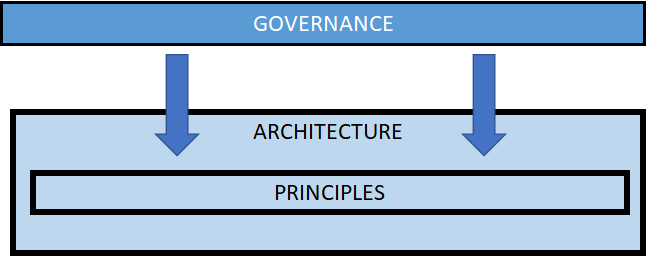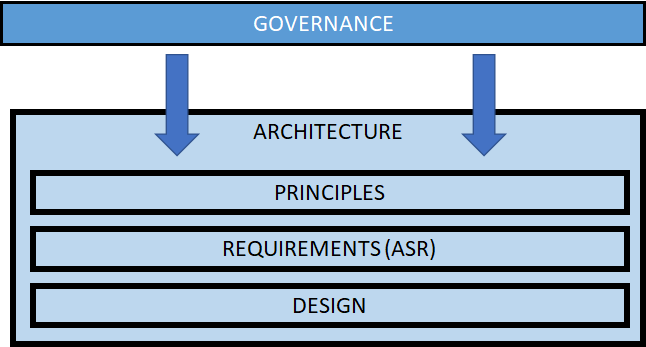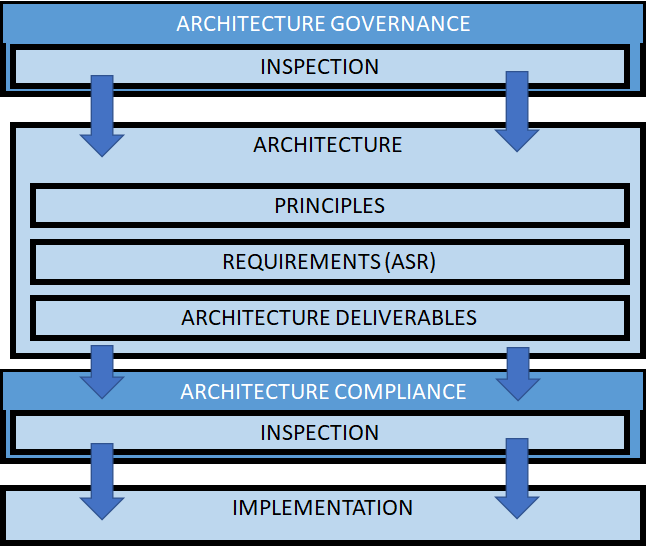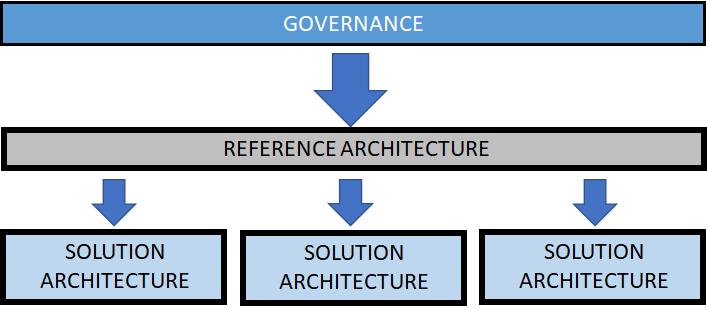“Governance is a system that provides a framework for managing organizations. It identifies who can make decisions, who has the authority to act on behalf of the organization and who is accountable for how an organization and its people behave and perform. Governance enables the management team and the board to run organizations legally, ethically, sustainably, and successfully, for the benefit of stakeholders, including shareholders, staff, clients and customers, and for the good of wider society.” definition of Governance, Chartered Governance Institute UK and Ireland
What is Governance
There are many definitions of what governance is but most point out that it is a framework of structures and processes which allow the organization to operate according to a set of norms, values and policies.
These norms, values and policies may be specific to the organization and to the industry sector the organization is involved in or they may be more general. For example, organizations in strongly regulated business sectors are also likely to have strong governance frameworks, since consequences of poor practices or decisions may be severe. Consider sectors such as the medical, pharmaceutical, energy, military or banking, where the consequences of poor decisions may result in loss of life, or substantial financial loss that leads to economic problems at a much higher scope. In the BTABoK Safety and Liability article these are labeled Tier 1 systems and result in a different governance implementation of the engagement model for architects.
Governance applies to architecture for similar reasons, and the strength of governance in the organization will likely be determined by the business sector and risk.
A governance framework includes the structures and processes for:
-
Accountability
-
Values and norms
-
Control
IT and technology governance is generally a subset of larger organization frameworks and processes. Popular frameworks such as COBIT and ITIL may be used for IT governance. These are often used in large organizations and are comprehensive frameworks. However, implementing such a comprehensive framework takes a lot of time and effort. Smaller organizations may find these frameworks overwhelming and settle for developing a framework which meets essential governance requirements.
In terms of architecture, good governance structures and processes facilitate decision making and help to form the architecture in a way which is fit for the business in question. Therefore, governance aids the development and delivery of good architecture.
Why Governance is Important
Effective governance is important within an architecture practice to promote good ethics and a culture of professionalism. Executing good governance ensures stakeholders can trust the architecture practice to carry out their work to the standard expected by the stakeholders.
Governance provides the architect with support for decision making when developing an architecture. It facilitates the understanding of regulatory requirements on the architecture, and helps the architect avoid making bad decisions with significantly negative effects.
Practicing good governance facilitates transparency. Inspections in the governance process raise issues, non-conformances and openly publish recommendations for resolutions. This provides support for the organization in maintaining standards and allows architects involved in different assignments to learn from recommendations which are openly discussed.
Having a governance framework in place helps to develop a culture of professionalism, and facilitates the practice of good ethics.
Governance is particularly important when working in business areas where bad decisions have severe consequences. These are often safety critical types of business, for example, medical, nuclear, or aerospace, where a bad decision or a missed inspection can cost lives. Governance provides the organization with a way of regulating safety and liability, and provides clarity regarding responsibility and accountability.
Governance Approach
The BTABoK is an innovation focused body of knowledge. This means that it generally leans towards architects being involved primarily as change agents. Governance itself is more review-focused. The BTABoK treats this as a flexible spectrum. For example, in Tier-1 systems (safety-critical) the architecture practice would be significantly more governance focused, while in Tier-2 and 3 systems they would be much more innovation focused.
Governance is Everyone’s Business
A governance framework should be flexible and develop, based on feedback from stakeholders, not only to facilitate solid standards and principles, but also to ensure that the governance is practical. Engagement with stakeholders at an early stage will help form governance so it is less intrusive, and create a wider acceptance. The role of the architect is to ensure that the architecture takes governance in to consideration, so that the architecture aligns with the objectives of the business, as well as ensuring that resulting implementations comply to the architecture.
Architects Should Be Governed Not Governing
As above the goal of the architecture practice is to deliver change in the most valuable and effective manner. Thus, a base practice for them is to be governed, not do the governing.
Avoid the “police state”
Governance is used to help the organization make good decisions, however if governance is practiced badly, it can create a “police state” culture. Stakeholders will feel controlled, and may not be aware of why they have to follow the policies, processes or the architecture. Practicing good governance means that the organization must communicate and motivate governance. This can be achieved through mentoring and training.
Governance Helps Agility
Sometimes in agile practices, governance is seen as a negative. This is perhaps as it goes against the principle of keeping decisions as close to the agile teams as possible. However, in most industries it is unrealistic to assume that each team is responsible for decisions which affect the whole organization. If done well, governance is a real positive and actually facilitates agility by helping teams in the decision-making process, as well as providing structures and processes for communication.
Bottom-up Governance
Governance done well during design and delivery, reduces non-conformances and resulting difficulties with stakeholder management. This means that decisions are clear prior to delivery and the resulting delivery follows the building codes of the organization. This makes inspections less painful and much less costly. In the BTABoK this is termed bottom-up governance. In addition, this aspect works extremely well with a rigorous extended team approach, and a partnership between architecture and engineering.
Governance for Governance Sake
Governance is essential, especially in heavily regulated industries, but it is important to strike the right balance. An organization wants to have innovative teams who are not weighed down by bulky governance, at the same time the organization needs enough governance to provide accountability, mitigate business risks and promote corporate values and norms. Ensure that governance is well-motivated and does not unnecessarily constrain the architecture or the teams. This forms the basis for the tenet, “Architects should not be scarce resources”.
Governance and the Architecture Practice
The architecture practice has a role in the governance of business technologies. This is often expressed as processes, organizational structures and principles that are used to manage and develop architectures.
TOGAF defines the characteristics of Architecture Governance as including the following:
-
Implementing a system of controls over the creation and monitoring of all architectural components and activities, to ensure the effective introduction, implementation, and evolution of architectures within the organization
-
Implementing a system to ensure compliance with internal and external standards and regulatory obligations
-
Establishing processes that support effective management of the above processes within agreed parameters
-
Developing practices that ensure accountability to a clearly identified stakeholder community, both inside and outside the organization
While all these aspects are very relevant it is important that governance reflects the context of the business. For example, the requirement for governance may depend on regulations, legal obligations, or the size of the organization. Creating a heavy governance framework may reduce agility, so it is important to ensure that governance is practical, relevant and is a helpful guidance which supports decision making.
An architecture practice participates in the development of the governance framework together with the different stakeholders in the organization. For example, developers, product owners, sponsors, testers, etc... Governance is everybody’s business, and broad involvement ensures that stakeholders are aware of why the governance exists. It is important that the governance is practical, so the different stakeholders feel that the governance is both relevant and realistic in the context of the business.
The following aspects are important to consider when developing a governance framework together with stakeholders:
-
Motivation - motivation as to why the governance is needed. This is an important aspect since it will be difficult to convince stakeholders to adopt the governance if there is no clear motivation.
-
Consequence - the consequences of introducing the governance. This is the effect of the governance, which can be both positive and negative. For example, we may gain a higher level of quality assurance but as a trade-off against delivery time.
-
Inspection Method - how do we validate that the organization is following the governance, for example, through KPI’s, inspections, reporting ...
-
Responsibility and Accountability - who is responsible for ensuring that the governance is adhered to, and who is accountable for the result
Governance and Architecture
Governance not only influences the process of developing an architecture but even affects the architecture itself. Governance may place requirements or constraint requirements on many products in the organization. For example, in the pharmaceutical industry, manufacturing technologies have to comply to FDA (Food and Drug Administration) regulations, if products are to be accepted to the US market. It may be the case, that part of this regulation requires a high level of traceability on the production of drugs. This would perhaps lead to an architecture practice within a pharmaceutical company, creating governance processes, policies and structures to manage traceability, both manually and automated. This is likely to place requirements and constraints on the architecture of such technologies, and the architect will have to account for this when making decisions about the architecture. Notice that the advantage of having the governance in place is that it raises awareness of the regulation for the architects. Governance may lead to the architect considering the requirements placed on the architecture, and will likely influence the characteristics of the architecture.
Responsibility and Accountability
In any organization it is important to align strategy and objectives, with the various architectures in the organization, whether they be solution architectures, or enterprise-wide. In order to facilitate this, there needs to be a clear structure as to who makes decisions, who is accountable and who is responsible for the execution. Without this, it may be difficult to lead the architecture work and provide a set of coherent architectures. Without a clear structure for responsibility and accountability we may also find it difficult to gain the trust of stakeholders, and it may be difficult to trace decisions back to their original motivation.
In practice, this is about defining roles and delegating responsibility and accountability. The term roles in this case can apply to a role given to a person or a group of people. Notice that in many cases it may be the architect who is being governed, rather than performing the governance.
Standards, Norms and Principles
Standards and norms can be stated in governance to help guide how to work with developing an architecture. For example, these may be ethical, environmental, technology standards. These may not even be specific to the organization and can be regarded as industry standards.

The architect can inherit, or develop architecture principles, these help the architecture to comply with governance. This helps to align the architecture with the aims of the organization, for example, goals and objectives. Developing principles help to give context and direction, which aids decision-making.
For example, some simple principles may be that “Flexibility is favored over performance.”, “COTS products are preferred to in-house development”, or “User actions must be fully traceable.”.
In regulated industries, these standards and principles may be strict, as compliance to regulation is often business critical. It is therefore extremely important, that the architect understands the implications of governance for the architecture.
Standards and Time Models
Standards and Technology Status Models
How Standards Relate to Principles
The basis for managed principles provide direct decision support for a particular architectural decisions. Standards support this through
Developing the Architecture
Governance may put forward standards and principles, but these often have to be interpreted for a solution in a given business context. For example, the governance may state that transactions in a system should be traceable to an individual user, but the governance does not state what this means in the context of any given solution, or how it should be designed or implemented.

Instead, it is up to the architect and the stakeholders to interpret which requirements should be placed on the architecture in order to comply to the governance. The architecture, and solution can then be designed using these requirements. Ensuring that the requirements on the architecture comply to governance is key to reducing business risk. If the resulting solution does not meet the governance standards, the product may never make it to production. With this in mind, it is recommended to perform a review of the architecture requirements against any applicable governance, to ensure that the interpretation is correct. This is likely to include different kinds of stakeholders from the organization, for example, legal, financial, political or environmental.
Checking for Compliance
It is natural that if an organization has a governance framework in place, it will want to check that the governance is being followed. The same is true for governance of the architecture. An architecture is often validated via an inspection, to assess if it meets the governance standards. This provides assurance for the resulting architecture deliverables. In this case, it is the architect and the architecture which are the subjects of governance.

However, it is not enough to ensure that the architecture follows governance, it is also important to provide assurance that the implementation of the technology follows the architecture. Therefore, we have to ensure that there is architecture compliance in the implementation. In this case, the architect is likely to perform the inspection to ensure compliance.
Such inspections ensure that the delivered product meets the governance criteria. It is good practice to perform regular inspections on the architecture during development, as well as a final inspection when the resulting solution is ready for delivery.
This ensures that there are no unpleasant surprises during the final delivery. It is also worthwhile remembering that in many cases governance also applies to how the architecture was developed (process), not just the resulting architecture. So, it may be important to show compliance in the processes and methods used to develop the architecture, as well as the resulting architecture.
Architecture Mentoring Vs Governance Boards
Beyond the inspections described above some organizations – particularly those in highly regulated industries – will need to demonstrate assurance of architecture decision making as a control measure in mitigating architecture related risks. This can lead to the creation of a board responsible and accountable for overseeing good architectural governance to fulfil this requirement. Care should be taken when establishing these boards to ensure they do not become overly bureaucratic or “Police State” as described earlier. Ensuring that these boards have a well-defined and understood terms of reference and appropriate board membership is critical to them being effective. These should also be regularly reviewed. One or more architecture boards may be established to cover:
-
Agreement and maintenance of enterprise architecture guiderails (such as reference architectures, principles etc.)
-
Review and approval of proposed solution architecture
-
Review and approval of implementation of solution architecture (to manage the creation of architectural and technical debt and any residual risks). Using Reference Architectures
A governance framework is often applied to many different organizations or products. In the case of the architecture practice, the same governance will likely be applied to many solutions. It may be time consuming and fragmented for each solution to interpret the same governance for their architecture. This can lead to several different interpretations of standards and principles as well as, making inspection complex.

One way the architecture practice can make it easier for architectures and solutions to comply to governance is to use a reference architecture. The reference architecture can be developed which complies to significant areas of governance and provides a set of requirements, patterns and designs which help solution architectures with compliance. Solution architectures can then use the reference architecture as a foundation, in the knowledge that their solution will be largely compliant so long as they follow the reference architecture. This can make inspection easier since the reference architecture is deemed to be compliant, the inspection need only check that the reference architecture is followed.
References and Further Reading
Governance, what it is and why it is important – Governance Today Governance
What is governance – Institute on Governance What is governance
What is governance – Chartered Governance Institute UK and Ireland What is governance
Architecture Governance (Chapter 44), TOGAF Architecture Governance
COBIT COBIT
ITIL ITIL

BTABoK 3.0 by IASA is licensed under a Creative Commons Attribution-NonCommercial–NonCommercial 4.0 International License. Based on a work at https://btabok.iasaglobal.org/